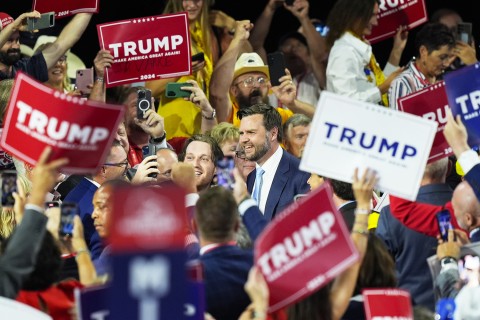The American megachurch and the Christmas prosperity gospel
I am a historian of the prosperity gospel. My dad is a historian of Christmas. Yes, the apple basically fell straight down beside the tree. About this time every year we have something fun to argue about: has Christmas become just another reflection of the North American cult of consumerism? Are believers thrilled about the coming of the Christ child, or simply the gold and frankincense and myrrh?
In a few weeks, millions of Americans will pack the nation’s largest churches to experience a state-of-the-art Christmas spectacular. Gone are the days of simple hymn sings and lit candles. Instead, America’s largest Christian assemblies spend millions of dollars on lavish sight and sound experiences intended to inspire and entertain peaking audiences. Vast choirs, professional lighting, cinematography and intricate choreography with hundreds of participants have become standard fare. Saddleback Church plans to provide its 20,000 members with a 50-foot tree, live reindeer and artificial snow. With so many potential converts in attendance, Christmas services have become liturgical shock-and-awe campaigns.
This display of Christmas cheer seems to reflect the wider cultural investment in a “performative prosperity gospel.” Whether or not churches explicitly teach the prosperity gospel’s message—that faith unleashes heavenly blessings—Christmas seems to do it for them. North American Christians seem most theologically at home with a holiday that heaps presents under the tree and food on the table as a reflection of Emmanuel, God with us.
Christmastime in America’s megachurches is a middle-class utopia. Jesus’ coming rewards the faithful with more than enough, a whole-life prosperity that can be seen as much in the Xbox One under the tree as in the worship at the altar of children’s Christmas pageants. So much the better if your church can assemble a living Christmas tree or a nativity scene that doubles as a petting zoo.
But perhaps this has more to do with what Tewaldi, an Ethiopian refugee member of our evangelical Mennonite church, observed after his first year in Canada: “At this church, I can’t tell the difference between Good Friday and Easter.”
Coming out of the ceremonial richness of his Coptic background, Tewaldi couldn’t feel among us the liturgical lows of the Christian calendar. And so he couldn’t feel the highs either. The flattening effect of North American Protestantism came at a theological price. Without that temporal economy of up and down— sanctified periods of celebration and discipline, light and darkness, feasting and fasting—it was hard to tell spiritual time at all.
But what I see as a de facto prosperity gospel, my historian father sees as a blessed seasonal byproduct. It has been said that the church showed a great deal of tact in assigning Lent to that time of the year when harvest was a long way off and food was at its scarcest. The same is true with Christmas, which occurred in the pre-industrial world when the harvest had been taken in and the grain was plentiful for fresh bread, heavy cakes and beer. The cattle and pigs must be slaughtered, the fish pens emptied and the grapes fermented. The house brimmed with good things that had to be eaten, a naturally designed festive peak of the year.
And so Christmas comes and Christians seize upon it as a time of liturgical refreshment. In the moment of deepest darkness and barrenness of the landscape, the church fills sanctuaries and home with warm light and greenery and feasting. The prosperity gospel of this time of year slips in as a moment of seasonal opportunity.
The Christmas prosperity gospel may also serve a theological end. In the midst of light and warmth and absurd generosity, the more-than-enoughness of the season offers Protestants an opportunity to experience one of the dazzling highs of the Christian calendar.
Christmas, in one sense, is the story how God lit the darkness. But it took Americans to proclaim it in a laser light display.
Our weekly feature Then and Now harnesses the expertise of American religious historians who care about the cities of God and the cities of humans. It's edited by Edward J. Blum.





